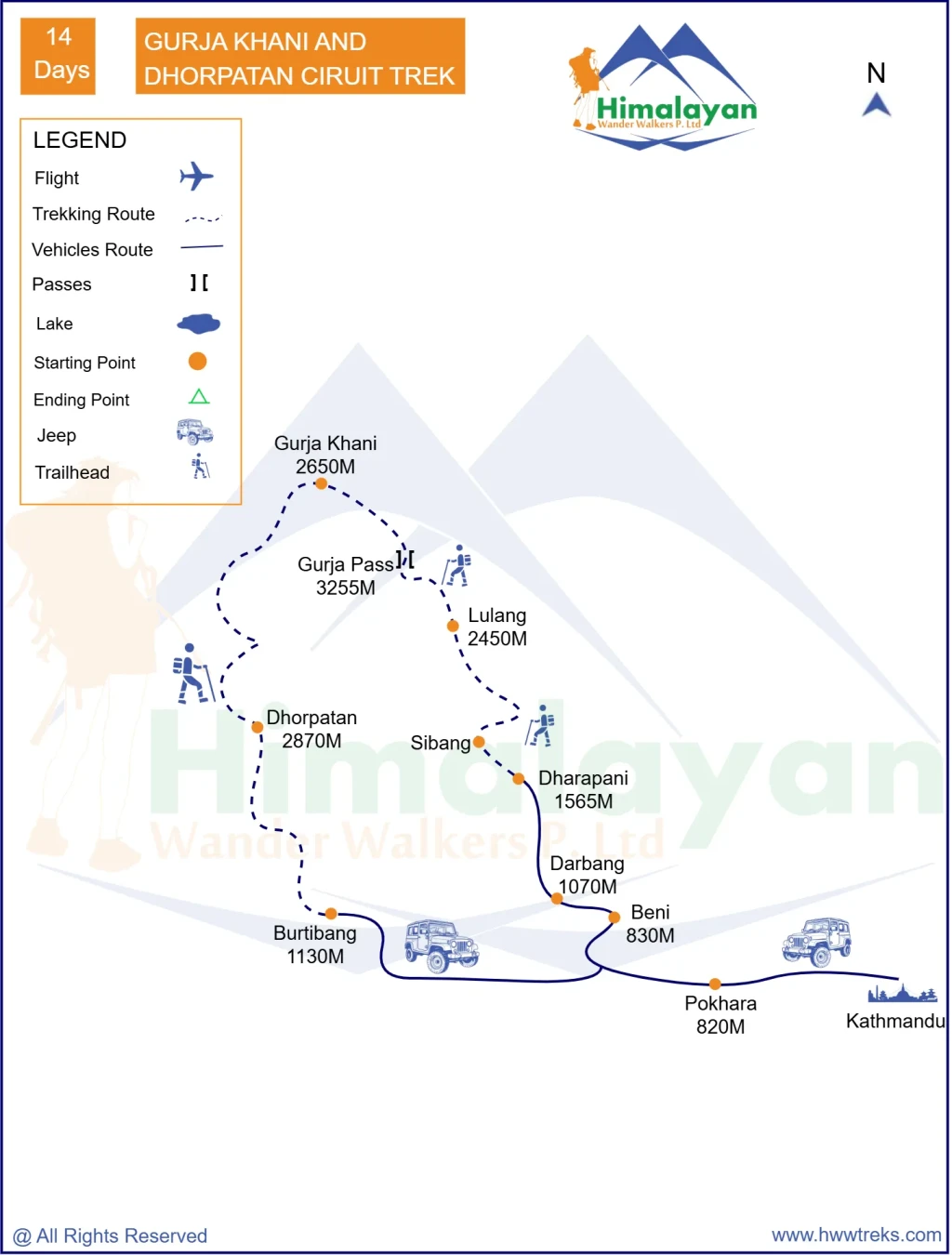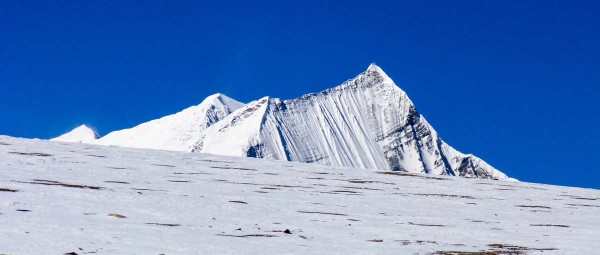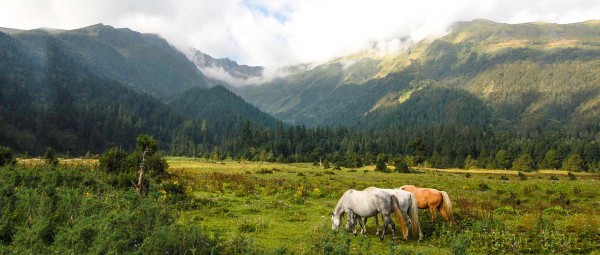Important Information
Region
Dhaulagiri Region Treks
Duration
14 Days
Max Altitude 3500m
Best Season March - November
Activity Per Day
5-6 hrs
Grade
Level 3
Group Size
2 - 12 people
Transportation Flight - Jeep
Gurja Khani-Dhorpatan Circuit is one of off-the-beaten- treks, a combination of cultural and scenic passes for Mountain View. This trek is located in the Dhaulagiri Region. It is dominated by the huge mountain-like south face of Dhaulagiri Himal (8,167 meters), Gurja Himal (7193m), Putha Himal (7246m), and Churen Himal (7371m). Trekking to this area is strenuous and least traveled but rewarding trek that offers you to witness one of the most beautiful mountain vistas. Traversing from the hidden valley of Gurja Khani to Dhorpatan via Rugachaur Pass 3850m is challenging and some trekkers keep an extra day for an overnight stay at Rugachaur that is possible only on a full camping trek. Most of the trekkers directly walk to Gurjaghat (3000m) from Gurja Gaun, especially in homestay trek. This trek required physical fit and good stamina to hike over 7 hours a day.
Himalayan Wander Walkers suggest all our clients choose the homestay trek so the host family can directly benefit from your expenses on accommodations and foods expense. We do organized camping trek for those who choose comfort treks. Settlement of Tibetan Refugee, typical Magar villages, and pleasant grassland of Dhorpatan, sole Hunting Reserve of Nepal are additional features of this trek. Of course, you will experience both Hindhu and Buddhist cultures on the trial.
Gurja Khani and Dhorpatan Circuit Trek Route
This trip starts from Kathmandu and driving to Dharapani via Pokhara and Beni with a total distance of 325-kilo meters approximately. From Dharapani trek begins by taking an anticlockwise route. The route leads to Gurja Khani via Lulang by crossing the Gurja Pass at 3250 meters. Then after spending a full day in Gurja, you will trek to Gurjaghat passing the Rugachaur Pass that is located within the Dhorpatan wildlife conservation. You will have an exploration day in Dhorpatan and return to Singa Tatopani via Jaljala Pass and Lumsang. After the hard trek, soaking yourself in a hot spring will rejuvenate your tiresome body and drive to Kathmandu.
If you are looking for a different itinerary than the one here, please Customize Your Trip.
Include
Airport Arrivals and departure transport by car (We will collect you from the Kathmandu international airport) and transfer to Hotel.
Half-day sightseeing in Kathmandu (Boudhanath and Pasupatinath) with city guide and necessary transport.
3 nights’ accommodation (2 persons per room) in Kathmandu and 2 Nights in Pokhara with breakfast in 3* hotel.
All land transportations (a private car/ sharing bus)
Homestay Accommodation during the trek
Licensed Guide and a porter per two people
Staff Insurance, lodging and food Expenses
All required permits for Dhorpatan.
Group First Aid Kit.
Himalayan Wander Walkers Company Duffle Bag for luggage
Exclude
Meals & drinks during the trek and in Kathmandu (unless stated otherwise under ‘The trip cost includes’)
Personal trekking equipment
Travel/medical insurance
Emergency rescue evacuation
Phone calls
Internet
International air ticket
Tips for your trekking guide & porters at the end of the trek
If you’re forced to extend your trek due to bad weather or natural disaster circumstances, we are not liable to pay any compensation or otherwise be responsible for any expenses you may incur
Anything not mentioned in the ‘includes section’
Nepal entry visa Fee.
Route Map

Important Information
CHECKLISTS FOR GURJA KHNAI AND DHORPATAN TREK
- Valid passport (valid for six months from the date of your trip)
- MasterCard, Visa Credit, and Debit Cards are accepted in Nepal. However, some cash is highly recommended.
- Mobile (if your cell phone is from CINGULAR USA or ATNT (USA) operators, then your cell phone will work in Nepal.)
- Clothing (Layered clothes, windproof and waterproof jackets, fleece pullovers, thermal base layers, hiking pants, shorts, headwear, footwear, and other items according to your needs)
- Personal Items and Toiletries (First-Aid Kit, Iodine tablets or a UV purifier to treat water, Sun Protection)
- Travel and Health Insurance
- Trekking gear and equipment(if you have your own trekking gear and equipment, such as trekking poles, sleeping bag, and shoes, then you can bring them; else you can rent them in Thamel, Kathmandu). Read more for trekking gears and peak climbing gears.
Guiding, Food, and Lodging
Trekking in Nepal, all trekking supplies - Teahouse trekking means staying and eating in local lodges. We stay in single rooms where possible, but often you will have to share. The rooms are basic, normally just a bed with a pillow, blankets. A few have electric lights and all have a spacious dining room-lounge. We eat at teahouses and, although the food is usually plentiful and delicious, the menu is not extensive. They offer a variety of potatoes, rice and noodle dishes, as well as soup and seasonal vegetables. Beers and local spirits are often available, but that will be at your own cost. A variety of cereals, bread, and egg dishes are generally available for breakfast. There are also snacks available such as basic biscuits, chocolate, and soft drinks and in some areas, you will find fresh fruit in season. It is normal to meet your porter in the teahouse where you will stay overnight. So, pack your necessary things in your own day pack.
DRESS CODE FOR VISITING MONASTERIES, AND TEMPLES
- Shirt (either half or full sleeve)
- Full pants/long skirts
- Any type of shoes with socks
- No Hats, No Umbrella, No Slippers, No t-shirts, No short skirt, and No half-pants
- Photographs allowed in the courtyard only.
Note regarding itineraries
Although we generally adhere to the schedule, the itinerary is subject to change for numerous reasons beyond our control, including weather and terrain conditions, suitable campsite availability, and the group's general fitness level. It is important to understand that our trek is logistically complex and it is not unusual that adjustments be made. Our guide will orient you each evening to the following day's plan; their good judgment is the key to the long history of successful treks that Himalayan Wander Walkers has led till now. Please remember that our ability to make adjustments as needed helps to ensure that your trek is successful.
Frequently Asked Question
Yes, you can personalize your Dhorpatan Trek, and add any changes to the pre-built itinerary. Whether you want to stop and spend a day or night in a specific location or tea house or you want to add a side trek, just let us know what you're looking for, and we’ll be happy to accommodate your wishes: “Customize Your Trip.”
For the Gurja Khani Dhorpatan Circuit Trek, one needs to have the Dhorpatan Hunting Reserve Area Permit and the Trekker’s Information Management System(TIMS) Card, which can be obtained from the Nepal Immigration Department through registered and authorized trekking agencies.
Yes, hiring a guide is highly recommended, especially trekking to remote areas of Nepal, where there are rugged terrains and no proper trekking routes. Guides also provide valuable insights into the local culture, history, and landscapes, and they can assist with any issues, such as altitude sickness or changing plans due to weather-related issues.
During trekking packing light but adequately for the weather conditions and trek duration is the best practice. For the Gurja Khani Dhorpatan Circuit trek, one must at least include sturdy trekking shoes, warm clothes, a sleeping bag, water bottles, sunscreen, a hat, and a small first-aid kit in their backpack. Read our blog for more details regarding trekking gear and equipment.
One can do the Gurja Khani Dhorpatan Circuit trek from USD 1050(all inclusive price) per person and the cost differs depending on many factors including the season or time one chooses to trek, the mode of transportation, accommodations and lodging and many more.
Yes, you might get some symptoms of altitude sickness during the Gurja Khani Dhorpatan Circuit trek as it takes you to an altitude of 3500meter. .Staying hydrated, eating well, and ascending gradually are the best ways to prevent altitude sickness. If you experience symptoms like dizziness or headaches, inform your guide immediately so they can follow the necessary protocols.
The Gurja Khani Dhorpatan Circuit trek is a less travelled and demanding trekking route but it offers a rewarding vistas of mountains including the Dhaulagiri Himal, Gurja Himal and so on.
No questions found matching your search. Try different keywords or browse all questions above.
| {{type.min}} - {{type.max}} Pax {{type.name}} - {{type.desc}} | {{type.display_price}} per people |
Extra prices:
Let us help you decide Inquiry
You might also like

- 18 days
- Dhaulagiri Region Treks
Dhaulagiri Circuit Trek - 18 Days
Dhaulagiri Circuit Trek lies between the Dolpo and Mustang Region of Nepal. This trek makes a clockwise round to Mount Dhaulagiri (8,167 meters), the seventh-highest mountain in the world. In 1950 AD this area was opened for trekking and was first discovered by the team of French Expedition....

